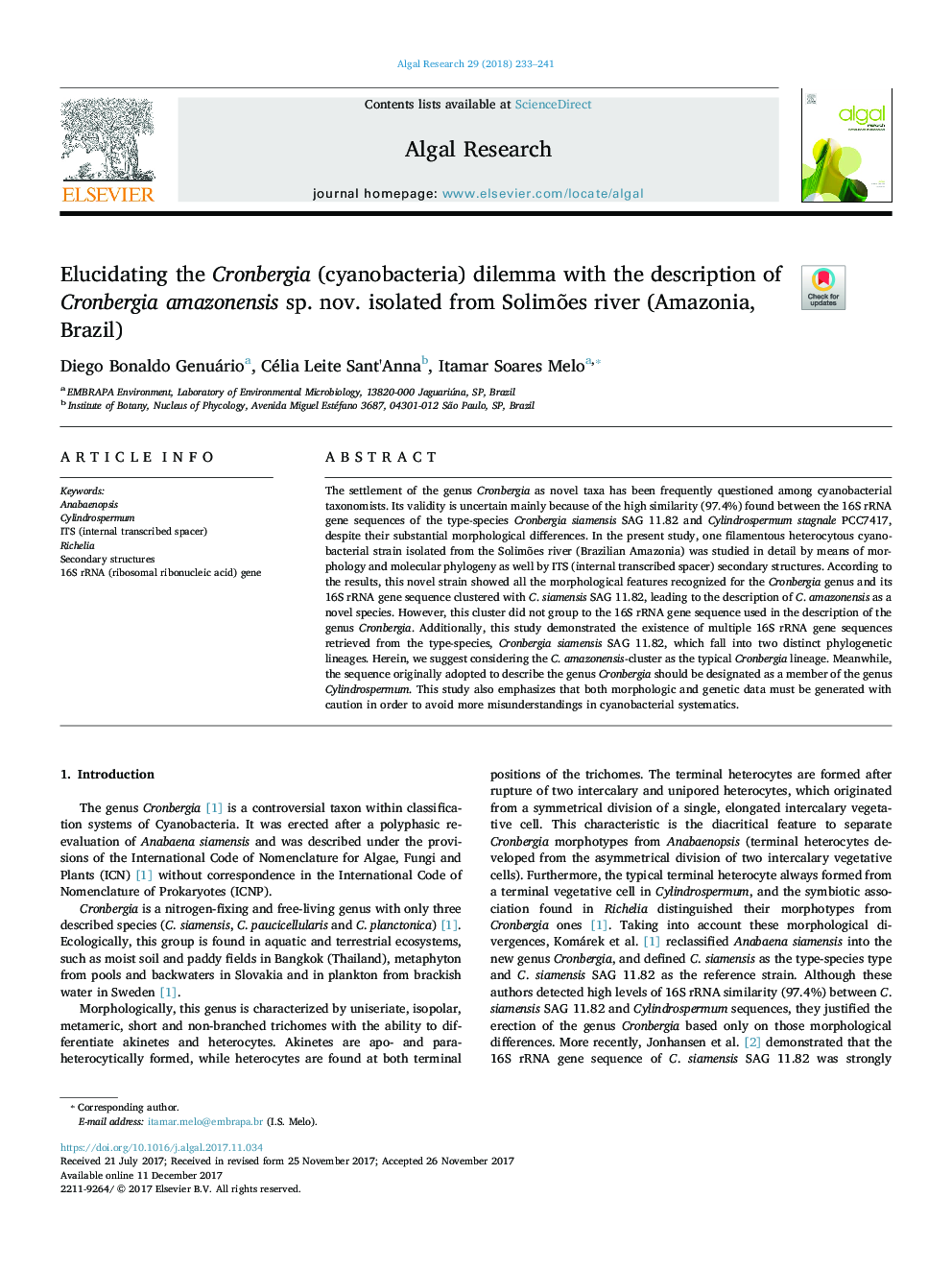| Article ID | Journal | Published Year | Pages | File Type |
|---|---|---|---|---|
| 8086204 | Algal Research | 2018 | 9 Pages |
Abstract
The settlement of the genus Cronbergia as novel taxa has been frequently questioned among cyanobacterial taxonomists. Its validity is uncertain mainly because of the high similarity (97.4%) found between the 16S rRNA gene sequences of the type-species Cronbergia siamensis SAG 11.82 and Cylindrospermum stagnale PCC7417, despite their substantial morphological differences. In the present study, one filamentous heterocytous cyanobacterial strain isolated from the Solimões river (Brazilian Amazonia) was studied in detail by means of morphology and molecular phylogeny as well by ITS (internal transcribed spacer) secondary structures. According to the results, this novel strain showed all the morphological features recognized for the Cronbergia genus and its 16S rRNA gene sequence clustered with C. siamensis SAG 11.82, leading to the description of C. amazonensis as a novel species. However, this cluster did not group to the 16S rRNA gene sequence used in the description of the genus Cronbergia. Additionally, this study demonstrated the existence of multiple 16S rRNA gene sequences retrieved from the type-species, Cronbergia siamensis SAG 11.82, which fall into two distinct phylogenetic lineages. Herein, we suggest considering the C. amazonensis-cluster as the typical Cronbergia lineage. Meanwhile, the sequence originally adopted to describe the genus Cronbergia should be designated as a member of the genus Cylindrospermum. This study also emphasizes that both morphologic and genetic data must be generated with caution in order to avoid more misunderstandings in cyanobacterial systematics.
Keywords
Related Topics
Physical Sciences and Engineering
Energy
Renewable Energy, Sustainability and the Environment
Authors
Diego Bonaldo Genuário, Célia Leite Sant'Anna, Itamar Soares Melo,
